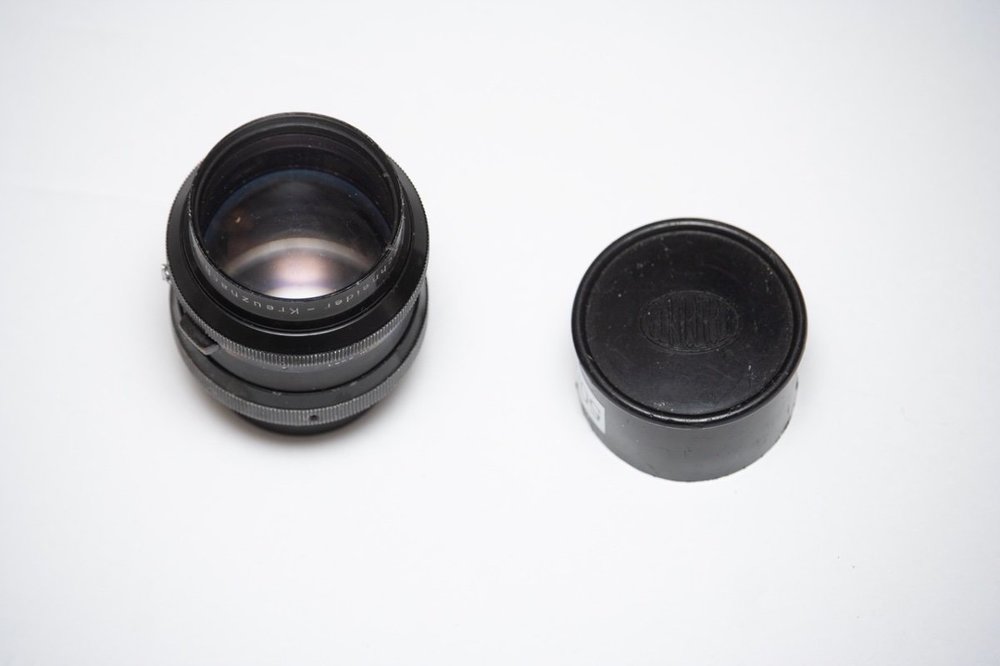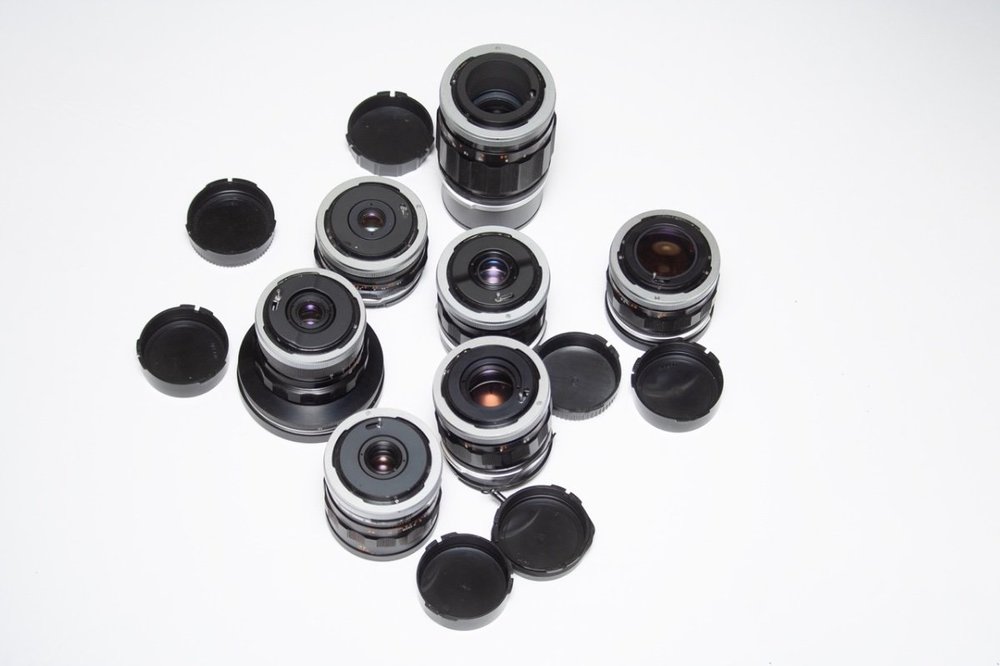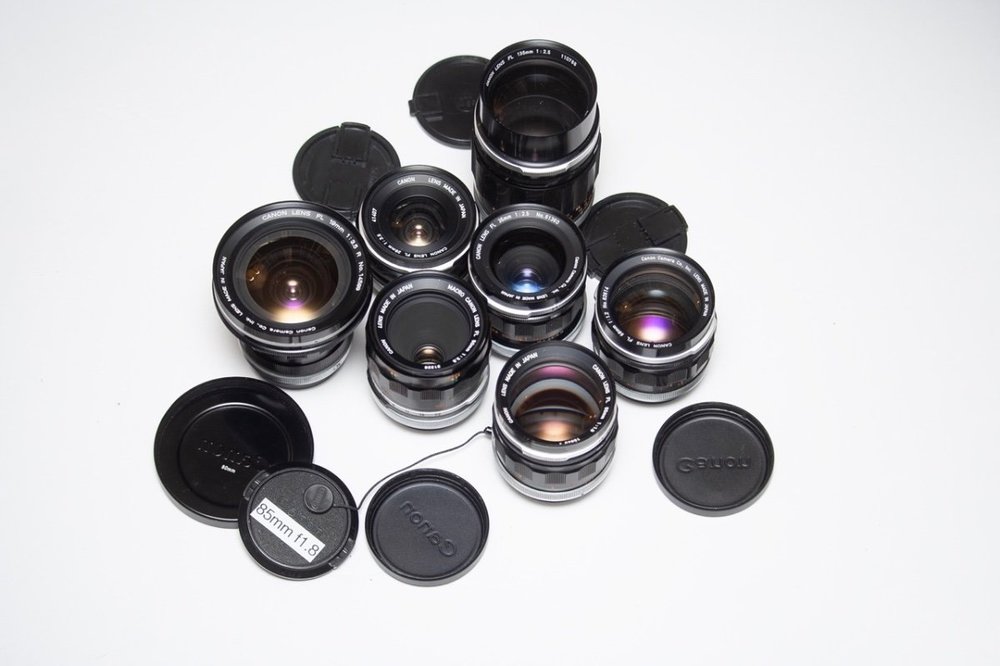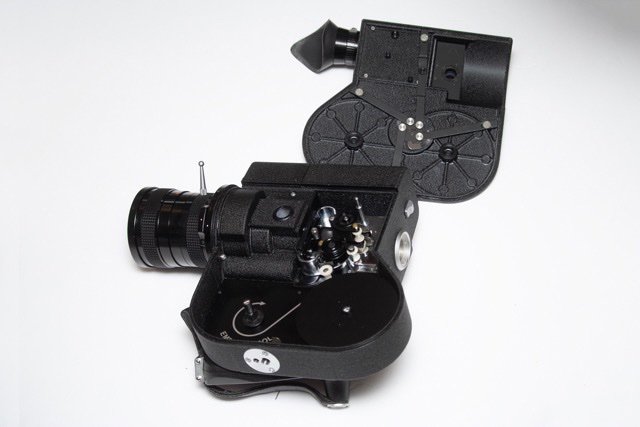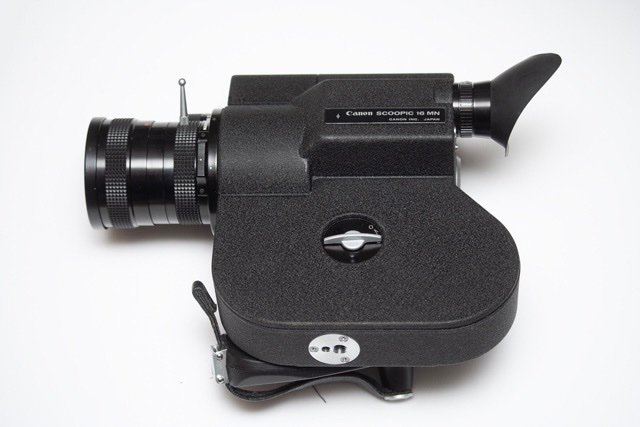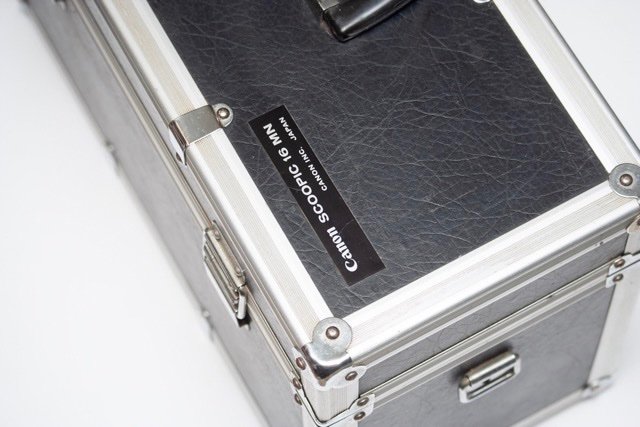
M Joel W
Basic Member-
Posts
768 -
Joined
-
Last visited
Everything posted by M Joel W
-
Ungraded. Let them know the color space though if it's not embedded or obvious. I suspect there are places (commercials) where they send graded footage but it's not normal.
- 4 replies
-
- greenscreen
- colorgrading
-
(and 1 more)
Tagged with:
-
Schneider Cinegon/Cine-Xenon Front Filter Threads
M Joel W replied to M Joel W's topic in Lenses & Lens Accessories
That sure sounds like 49.5mm and .75mm with a margin of error to me. My filters from RAFcamera only screw on a thread or two, too. Fwiw the 75mm is 40.5mm front and the 28mm f2.0 (not that you're using it on S35) vignettes on S35 I believe if you use a screw-on filter adapter. -
Is this true? I'm behind unfair here by choosing a film that is known in particular for its color rendition and the first Sony sensor I found on google. But if I'm reading this correctly (I'm probably not) there's (much) more separation on film: https://www.dpreview.com/forums/post/61982384?image=0 https://www.ishootfujifilm.com/uploads/VELVIA 50 Data Guide.pdf Edit: Much more overlap here: https://www.kodak.com/content/products-brochures/Film/VISION3_5219_7219_Technical-data.pdf But looks similar to digital?
-
In the consumer market there's a discussion about how older sensors (the original Black Magic Pocket, the 5D3, etc.) had nicer color rendering than today's cameras. I've anecdotally noticed that the F3 had nicer color than the F5/5 and C300 than the C300 Mk2 but I figured it was just growing pains going from 2K to 4K and in increasing dynamic range, etc. as I think they advertised wider color gamuts from the sensors. Was there a change in design philosophy re: CFAs? I still prefer the look of some of those older cameras. But I also REALLY like the image from the Venice, and even the Varicam35, for instance. Are different cameras quite different today? I have noticed the A7S3 has redder skin tones than the Venice, so I imagine different dyes? Black Magic seems to use Sony sensors with some built-to-order tweaks in their new Pocket Cameras, and even those have very nice looking color to me. Do they just profile the sensors better or is there a difference in CFA between the P6K and XT3?
-
I don't remember that but burying a focus pull in a camera move often works well. I usually try to not ascribe too much intent to what might be happy accidents, but I think the breathing in these shots was likely intentional given the availability of Signature Primes, Yedlin's technical acumen and how easy it would be to remove in post. I feel like there are certain directors who have a more "extroverted" approach and want their presence to be seen. Others would rather control the audience behind the scenes (Fincher) or guide them without getting in the way (Spielberg). Zooms are a more authorial move that someone who tries to guide the story more subconsciously like Spielberg or Fincher would be likelier to bury in a pan or tilt or dolly move like you mention. (I think it was Kaminski who had to push Spielberg to use zooms in Munich and I think Spielberg doesn't even like anamorphic before Bridge of Spies because the distortions in the glass create more of a presidio arch or distracting style; I think he wants immediacy and transparency despite Kaminski's heavy use of lens filtration.) Kubrick and Tarantino will use zooms unapologetically on the other hand. I'm definitely over-thinking this but I bet Yedlin and Johnson were aware of this kind of thing. I think they like the little "zoom" (which is all lens breathing is) or they would have staged these shots differently or painted it out in post. I like it, but it's just me. If it's not for you, go with Signature Primes.
-
Arri's new impression filters
M Joel W replied to Jacob Mitchell's topic in Lenses & Lens Accessories
This is really cool, really well done. I think I agree with Phil that the Helios lenses have the look of the positive diopters. And I suppose the trioplan lenses have the bubble look of the negative diopters. But where would we say vintage "speed" lenses like Speed Panchros, Baltars, Cine-Xenons, Zeiss standard speeds, Lomo standard speeds, etc. etc. all fit into the equation? I wonder if third parties are going to start making similar products for consumers, for instance for Nikon to E mount.... -
There's a lot of information here: https://www.pacificrimcamera.com If I remember correctly, that lens was designed to cover Academy but not S35. Its image circle is smaller than the 28mm standard speed or 25mm S2/S3, which are retro focus while the Schneider is a planar design? Anyway I think it will cover the film but might not cover look around room in the viewfinder. (I have not used a 35IIC.) The 25mm f1.4 is for 16mm however.
-
It's looking like more of a rental item for me for now but I didn't realize a solution like that existed with the focus control on the handgrip, that is really cool. But if I had more money I'd be tempted to buy it now. Is just not using a follow focus and pulling off the barrel an option for working as a one man band? Or I imagine if I was pulling focus myself off the MFF-1 and bought hand grips I'd want to position them closer to where the follow focus already is for balance? So essentially a hand grip right below the lens on the left side so it's near to the follow focus on the right and my hands are positioned more symmetrically than if I had a hand grip way out front? My camera is very light on the front and more rear-heavy than most as I have a small matte box and very lightweight lenses. Thanks again – I work in another department, as I mentioned, so the actual logistics are lost on me. Edit: this is a little crazy, but would something like this work if I have my other hand on the follow focus? https://www.bhphotovideo.com/c/product/1369375-REG/camvate_c1615_15mm_rod_clamp_handle.html (I doubt I'd get that, but the principle of having something roughy symmetrical.) I'd rent more support gear for a larger shoot. I remember the old conventional wisdom with handholding a still camera is to keep your arms near your body so I don't understand why in the photo I posted the hand grips are so far out except that they're using a front-heavy rig? I know this is a bit ridiculous for me to discuss. Probably going to end up with something similar to the Tilta rig eventually, whether renting or buying.
-
Thanks, that's really helpful. Is using a follow focus like an MFF-1 without an AC (and just using one handlebar) a really terrible idea? Is there any way to make that ergonomic in the interim while I save up for something better?
-
What would cause you to adjust your handle bars and how? Lens changes, changes to what angle you're pointing the camera at? Two of the Spider Grip set ups are around $600, which isn't much more than Tilta. Is there a particular model you'd recommend for an Alexa Plus (again, small lenses like standard speeds and just an MFF-1 and Gemini recorder). Right now I have an MFF-1 (that I like, but it gets really cramped) and I've been using my right hand to focus with it and left hand to stabilize. Is this remotely tenable? Is there a way to make it tenable? Or is shooting with an Alexa without an AC completely crazy?
-
Thanks! I don't have their wireless follow focus but I'm curious about it now. Does it record focus distance data? That's a workflow I've been interested in for vfx purposes. The Tilta rosette-only option is $280, it's about $100-$150 for SmallRig. If I'm using rosettes would the length that the arms extend be a factor because the rosettes are already backing the position of the grips up? They extend 8" on the Tilta, 10" on the SmallRig. When shooting handheld, I'm mostly using small lenses (standard speeds, etc.) with a small 4x4 matte box so it's not a front-heavy set up, if that matters. Thanks again.
-
Thanks! That makes a lot of sense. Rosettes are easier for me for the time being. I have the chintziest most DIY Alexa set up there is. Would using the SmallRig equivalent (or Tilta, somewhere in-between?) for handgrips and rosettes be a huge mistake if longevity is not my primary concern and I don't plan to rent out my camera?
-
Another photo: https://www.abelcine.com/uploaded/articlemodel/Da/Day-10-214-XL1-e1451415847119.jpg Looks like I want something much longer so I can attach to the rosettes on the body. Does anyone use the rosettes on the camera body or are most people using grips on the 15mm rods? Why or why not? Thanks.
-
I'm looking for something similar (but if possible affordable) for a similar "lightweight" ARRI Alexa Plus set up to this Alexa XT set up: https://www.abelcine.com/uploaded/articlemodel/Da/Day-10-208-XL1-e1451422112784.jpg I want to mount them to the rosettes on the camera rather than on rods. I don't need them that far forward but still comfortably far forward. Looking for something relatively inexpensive if possible. Thanks!
-
Does 16mm f2.8 YVAR Lens cover S16
M Joel W replied to M Joel W's topic in Lenses & Lens Accessories
Thanks. I won't bother. I love the footage I've seen from the 1.44X Auto Panatars from Panavision and since an Iscorama is 1.42X I kind of wonder if there's a way to put together a similar set DIY (16mm, 50mm). I'll never have a project that justifies this kind of thing for real. A DIY approach is probably possible. Is it advisable? Probably not. -
Also, could I use an adapter like this with an Aaton Mount LTR-X without issue? Thank you. https://www.ebay.com/itm/374393015914?hash=item572b900e6a:g:aHQAAOSwIK9iABpu&amdata=enc%3AAQAHAAAAoByDT0Cf9W2KdMNsof2bpLwWQjus3HQL2MOiJqN0VOMaTTqnFG3higZGUGHCpfkmU21ACruGlax%2FZ6k2VQhbaZI0gqBwbz2TcqCDiSTUTRBdhilsrkpgDPbBPQMfNdPVjaX1TM10gosOAly53Ac7Wcut%2FuLfB33GsUFUCmw2XFg%2B8Eg618MJ%2FVPE4HEDJ%2BORAcOu5%2BVXVQU1hOiGgPZy4dI%3D|tkp%3ABk9SR5Ld26y-YQ
-
Really curious about these. What t stop are they. What era were they made? They're 1.44X apparently. I have an Aaton mount S16 camera so I can use Nikon F lenses. Wondering about 16mm f2.0 Rokinon, 28mm f2.0 Zeiss, 50mm f2.0 Zeiss with an Iscorama 36 on the front. Weird mix of old and new glass but would this be a viable solution. The stretch is 1.42X, perfect for S16. The front of the 16mm lens is much too big, but I believe this should result in vignetting and not a reduction in f stop. And hopefully not so much vignetting it wouldn't be useable on S16.
-
Watch out for the rear element hitting the mirror. You can convert Arri standard and Bayonet to EF (might have similar issues with the rear element) but those lenses are expensive compared with an 11-16mm Tokina or whatever would probably work just about as well. Also might have issues with mirror clearance.
-
Optically good. Ignore the dust I forgot to clean off. Similar look to Cooke Speed Panchro but no yellowing. No mount. Not a standard or common part so you'll need to put something together yourself. $100 plus shipping.
-
Underrated lens set. Similar coatings to Kowa Cine-Prominars. Beautiful flares. Sharper than expected. 19mm f3.5 is a sleeper, better than other brands from this era except perhaps Leica. All in very good to excellent condition. Great optically. 85mm f1.8 has been serviced recently but shows cosmetically just a bit more wear. Includes: 19mm f3.5 (retrofocus 77mm front version) 28mm f3.5 35mm f2.5 50mm f3.5 Macro 58mm f1.2 85mm f1.8 135mm f2.5 Gorgeous blue and yellow flares, consistent coatings. Similar look and feel to canon rangefinder glass but longer flange distance. Looking for $2000 plus shipping for the set. These might be my favorite lenses but I need money more.
-
Selling my Scoopic MN, sorry to see it go. In great shape EXCEPT that the light seals could use replacing (I have seen light leaks under bright sun, but nothing too bad) and the viewfinder window is VERY HAZY. I will post a separate picture so you can see what I'm talking about. Regardless, could use a service for sure. But cosmetically beautiful and runs well. Includes accessories like lens hood, lens cap, ND4 filter, skylight filter, battery (I believe there are two and they're working), charger, AA battery adapter, flight case, etc. Runs well but the viewfinder is too foggy to judge focus through easily (I had to zoom in and focus then zoom out). Just shot two rolls with it, they looked great. Great camera. $1500 plus shipping for everything. Sorry to see this go. I might recommend sending it in for a service but it's in beautiful condition other than the aging light seals (which aren't even that bad) and hazy viewfinder window (which is pretty bad).
-
Thanks. I think I got my hopes up reading about the TLS "FD-X" line. The original 18mm K35 appears to be halfway between a novel design and modified 24mm FD L. It's got its front few elements (focusing group?) moved forward and a two-element wide angle converter placed in front. I think it has 95mm front threads. TLS has a nice looking "full frame" 18mm lens that appears to be a 24mm FD L with an Angenieux wide angle converter. I figured it was using the one above because the FD L has a 72mm thread and so does it. But I think it's instead a much much larger one. (143mm front) Single-element converters (and macro tubes) don't seem to do the trick. Too much barrel distortion. Multi-element converters like the Canon 72mm that is often used on Kowa anamorphic lenses are too heavy. I found a very very good but apparently uncoated 600g wide angle converter with 72mm threads but the front is 100mm (larger than I'd like) and it vignettes a bit even on S35. It might be the best I'll get. Performance is actually really good but the lack of coatings is an issue and I'd rather a 95mm front.


